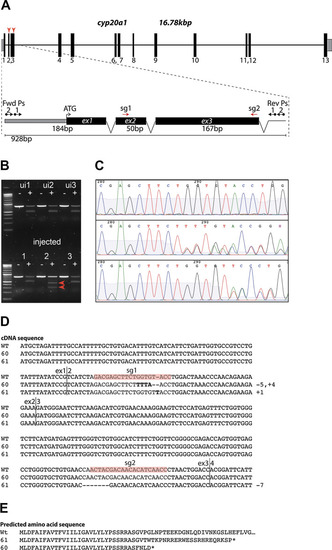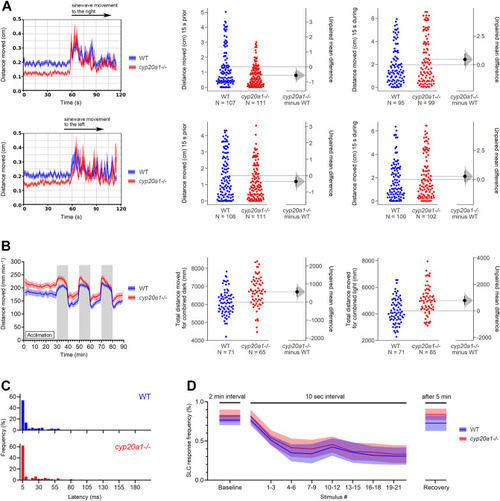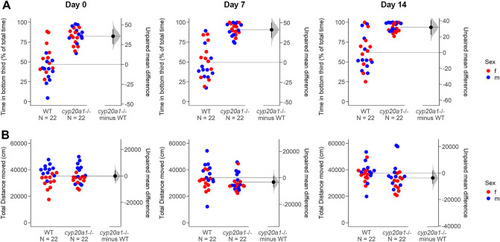- Title
-
Orphan cytochrome P450 20a1 CRISPR/Cas9 mutants and neurobehavioral phenotypes in zebrafish
- Authors
- Brun, N.R., Salanga, M.C., Mora-Zamorano, F.X., Lamb, D.C., Goldstone, J.V., Stegeman, J.J.
- Source
- Full text @ Sci. Rep.

ZFIN is incorporating published figure images and captions as part of an ongoing project. Figures from some publications have not yet been curated, or are not available for display because of copyright restrictions. PHENOTYPE:
|
|
Zebrafish cyp20a1 gene map and allele sequences. (A) Gene models. (B) Gel image showing PCR products and amplicon fragments derived from T7E1 mutant survey (F0). Lower gel shows the positive (heteroduplexed - red arrows) T7E1 signature. (C) Chromatograms from F1 heterozygous embryos (wh60 and wh61) beginning near the sg1 site. (Note the appearance of double peaks). (D) cDNA sequences for exons 1?3 for WT, wh60, wh61. Note wh60 is a 5 bp deletion and 4 bp insertion in exon 2 and wh61 is a 1 bp insertion in exon 2, and a 7 bp deletion in exon 3. (E) Putative translation of cDNAs. |
|
Larval behavior. (A) Optomotor response of wild-type (WT) and cyp20a1 wh61 mutant larvae (n = 95?111, depending on tracking success). (B) The locomotor activity of cyp20a1-/- wh61 mutant larvae (n = 65) during the dark and the light phases in comparison to the WT larvae (n = 71). Increased movement is interpreted as hyperactivity. (C) Rapid startle response to the highest acoustic stimulus (43 dB) of WT (n = 138) and cyp20a1 wh61 (n = 127) larvae. (D) Habituation to the highest acoustic stimulus of WT and cyp20a1-/- wh61 mutant larvae measured as short-latency C-bend response (SLC; < 15 ms) per plate (n = 11) and depicted as mean ± 95 CI. All individual data points represent biologically independent replicates from three independent experiments. PHENOTYPE:
|
|
Adult behavior in the novel tank assay. (A) Percentage of the first 10 min spent in the bottom third of a novel tank of cyp20a1 wh61 mutant zebrafish (n = 22) in comparison to wild-type (WT) zebrafish (n = 22). Increased time spent in the bottom third is interpreted as anxiety-like behavior. (B) The distance moved within the first 10 min in the novel tank of cyp20a1 wh61 mutant zebrafish and WT zebrafish. All individual data points represent biologically independent replicates. The experiment was repeated on day 7 and day 14 with the same fish. PHENOTYPE:
|

Unillustrated author statements PHENOTYPE:
|



